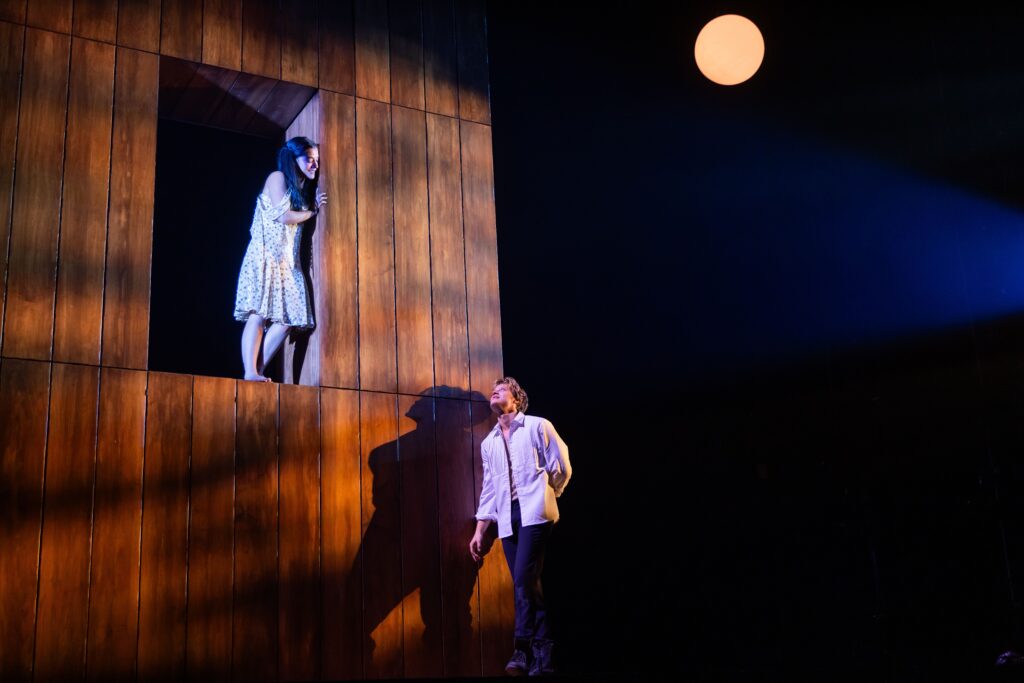
Photo Credits: Nile Scott Studios and Maggie Hall
‘Romeo and Juliet’ – By William Shakespeare. Directed by Diane Paulus. Movement and Choreography by Sidi Larbi Cherkaoui; Original Music Composed by Alexandre Dai Castaing; Scenic Design by Amy Rubin; Costume Design by Emilio Sosa; Lighting Design by Jen Schriever; Sound Design by Daniel Lundberg. Presented by American Repertory Theater at the Loeb Drama Center, 64 Brattle St., Cambridge through October 6.
By Shelley A. Sackett
Diane Paulus, Artistic Director at American Repertory Theater, has raised the bar on production values so often, we’ve come to expect the unexpected from her. From 1776 to Pippin to Gershwin’s Porgy and Bess, Gloria: A Life, Jagged Little Pill, Waitress, SIX, and more, theatergoers in Boston have benefitted from her inspiring collaborations and razor-sharp skills to enjoy Broadway-bound productions right in their own backyard.
Romeo and Juliet is no exception.
Working with a creative team of stellar talent, Paulus has breathed contemporary life into Shakespeare’s 16th-century well-known and oft-quoted masterpiece.
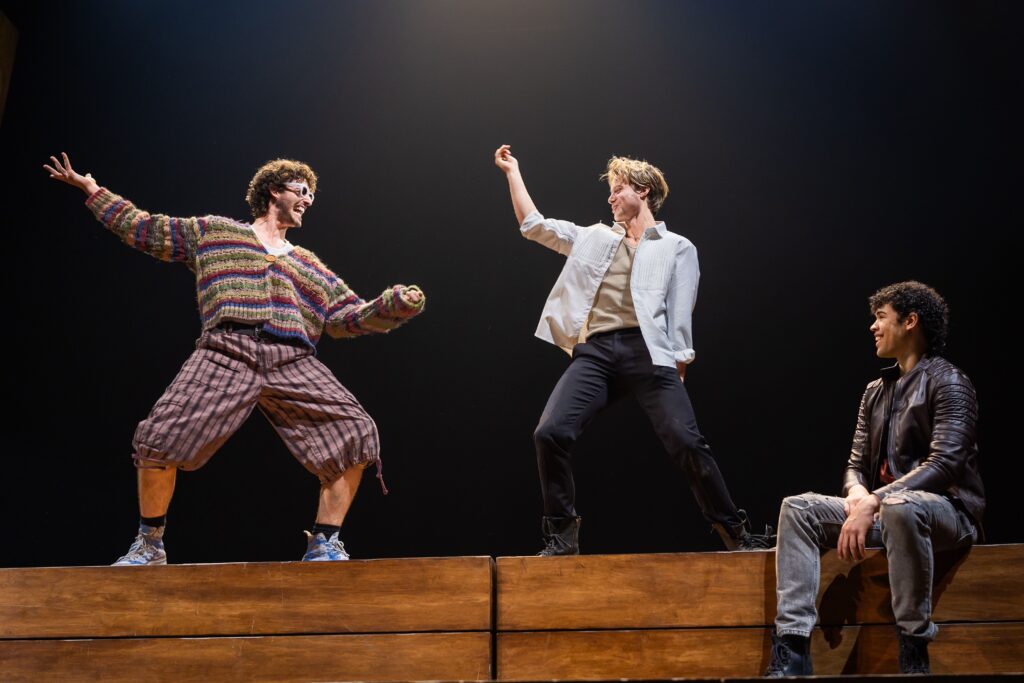
The tragic story is a familiar tale of star-crossed lovers caught in the crosshairs of a family feud so old that its origins have faded from memory. Paulus said she wanted to focus on the couple’s feelings for each other and highlight their love instead of their families’ hate. By using movement, evocative music, lighting, and a spectacularly efficient set, she creates the perfect stage upon which such a transformation can — and does — happen.
As with all Shakespeare (and especially in productions where there are no projected captions to serve as guides), a plot primer can be helpful.
Juliet Capulet (Emilia Suárez of Hulu’s Up Here fame) and Romeo Montague (Rudy Pankow of Netflix’s Outer Banks) meet and fall instantly in love at a masked ball hosted by Juliet’s parents. They profess their devotion when Romeo, unwilling to leave, climbs the wall into the orchard garden of her family’s house and finds her alone at her window. Because their well-to-do families are enemies, the two are married secretly by Friar Lawrence (the fabulous Tony Award winner and multiple nominee, Terrence Mann).
When Tybalt (Alex Ross), a Capulet, seeks out Romeo in revenge for the insult of Romeo’s having dared to shower his attentions on Juliet, an ensuing scuffle ends in the death of Romeo’s dearest friend, Mercutio (Clay Singer). Impelled by a code of honor among men, Romeo kills Tybalt and is banished to Mantua by the Prince of Verona (Jason Bowen), who has been insistent that the family feuding cease.
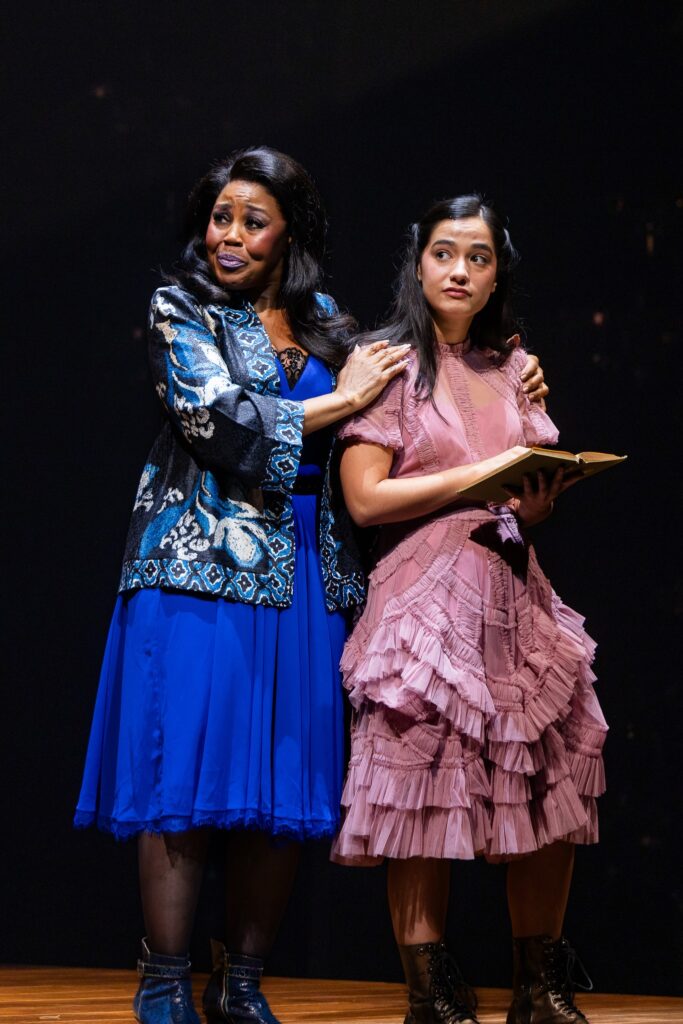
Juliet’s father (Terence Archie), unaware that Juliet is already secretly married, arranges a marriage with the eminently eligible Count Paris (Adi Dixit). The young bride seeks out Friar Laurence for assistance in her desperate situation. He gives her a potion that will make her appear to be dead and assures her that if she takes it, he will arrange for Romeo to rescue her. She complies.
Romeo, uninformed of the friar’s scheme because a letter of explanation has failed to reach him, returns to Verona on hearing of Juliet’s apparent death. He encounters a grieving Paris at Juliet’s tomb, and reluctantly kills him when Paris attempts to prevent him from entering. There, he finds Juliet in the burial vault. Unaware that she is only sleeping, he gives her a last kiss and kills himself with poison. Juliet awakens, sees the dead Romeo, and kills herself. The families learn what has happened and end their feud.
At Wednesday’s preview performance, magic and pathos were on stage from the opening scene that revealed Amy Rubin’s simple, thick butcher block set bathed in spot-on, evocative lighting (Jen Schriever). Actors push the heavy door open, symbolically revealing the opportunity for closed doors to open. Later, the flexible set will metamorphosize into Juliet’s balcony, a tomb and a party. All of that possibility is communicated in the first few moments.
Background rumbling and emergent music (created by sound designer Daniel Lundberg and the composer of the play’s original music, Alexandre Dai Castaing) set the tone for the opening fight scene, a West Side Story-esque stand-off between two teenage gangs. These are the Capulet and Montague clans, and the fury that boils in their blood is masterfully choreographed by fight consultant Thomas Schall and director/choreographer Sidi Larbi Cherkaoui. When the scene freezes into a bellicose tableau, the depth underlying this hostility is fixed on each light-bathed face. (Note: West Side Story is a modern adaptation of Romeo and Juliet that shares many themes and tells a similar story but is set in the 1950s in New York City’s Upper West Side).
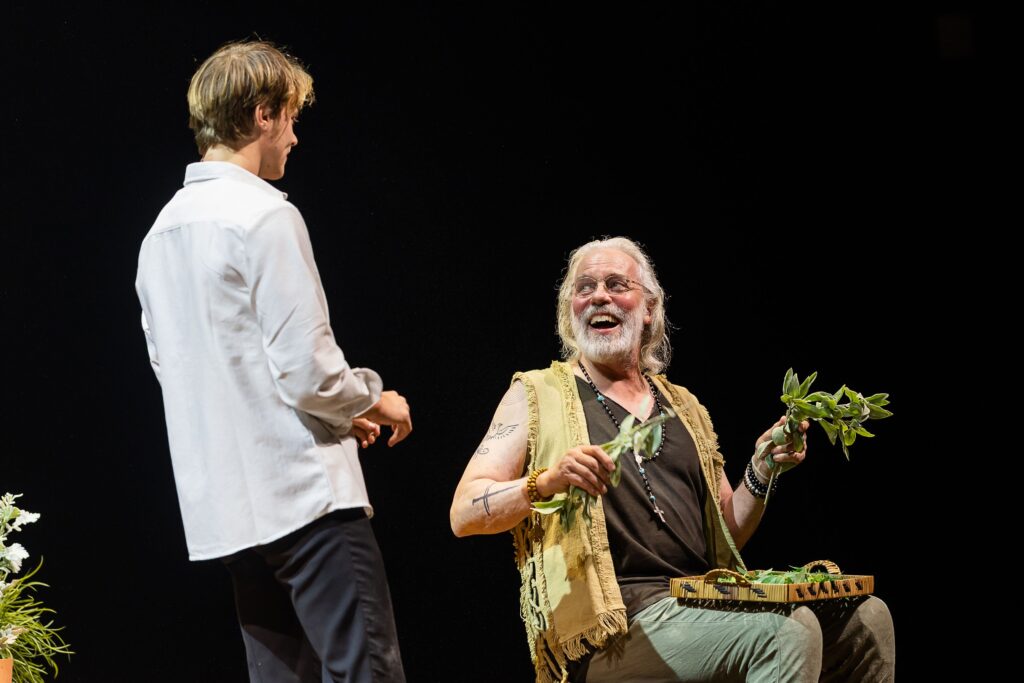
The impacts of visual imagery, light and sound throughout the two and one half hour (one intermission) production never wane. Rubin’s set frequently pivots to frame two or three scenes, providing simultaneous glimpses of different versions of the same event. Early on, as Romeo and Juliet prepare for the party her parents are throwing, Romeo and his buddies cavort stage left while Juliet preens stage right. The effect is as charming as it is enthralling.
Other special production moments are the use of globe lights (brilliant!), a warpath drumbeat soundtrack (by Dai Castaing), and the opening scene after intermission, when Juliet, wrapped in a white sheet, is lit like a fairy and the soft plunk of a harp highlight her delicate dancer’s gestures.
While enough can’t be written in praise of its production value, the real stars of Romeo and Juliet are the actors and the Bard’s sumptuous language. Cast standouts include Suárez as a stunningly lithesome Juliet, Nicole Villamil as Lady Capulet, Juliet’s mother, and the truly awesome Mann as Friar Laurence.
These three (and several other) actors seem to savor the play’s rich lines, lingering over some and articulating with a deliberateness that allows the audience to savor along with them. Unfortunately, some (most notably Singer as Mercutio) race through their lines, swallowing some of the glorious puns and humor that balance the play’s tragic overtones. A suggestion to A.R.T. is to consider following Shakespeare on the Common’s lead and provide projected captions. Absent that, audiences might want to read the play (it’s a short-ish one!) before or shortly after seeing this production. The added appreciation value is well worth the time spent.
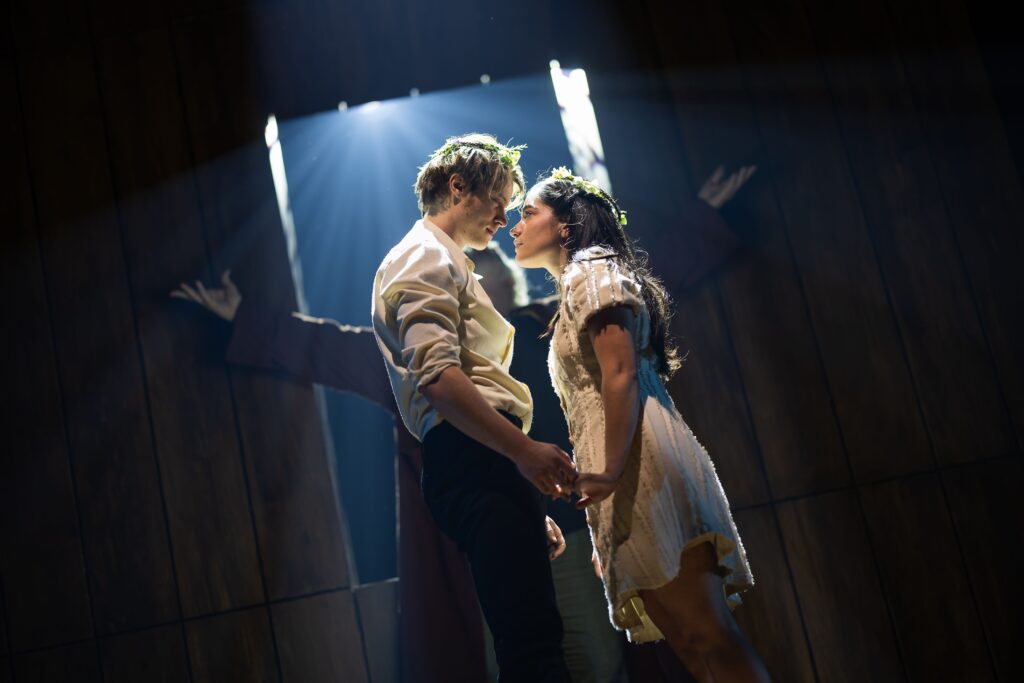
Paulus ends the play on a note of hope despite the carnage that the Verona families’ feud has wrought. As Romeo, Juliet, Thibault, and Mercutio are eulogized and buried, the full cast is on stage. Bright white light bathes the scene as the entire community comes together to bury their dead and plant a garden. Despite the gloomy peace that reigns, the Prince of Verona reminds its citizens, “All are punished. For never was a story of more woe than this of Juliet and Romeo.”
As Capulets and Montagues sow flowers and trees, we imagine Adam and Eve in the Garden of Eden and the innocence and hope of starting fresh and turning the page. In the current climate of political and environmental angst, who can’t benefit from a message that hints at the possibility of restoration, revitalization, and rebirth?
For more information and to buy tickets, go to https://americanrepertorytheater.org/

